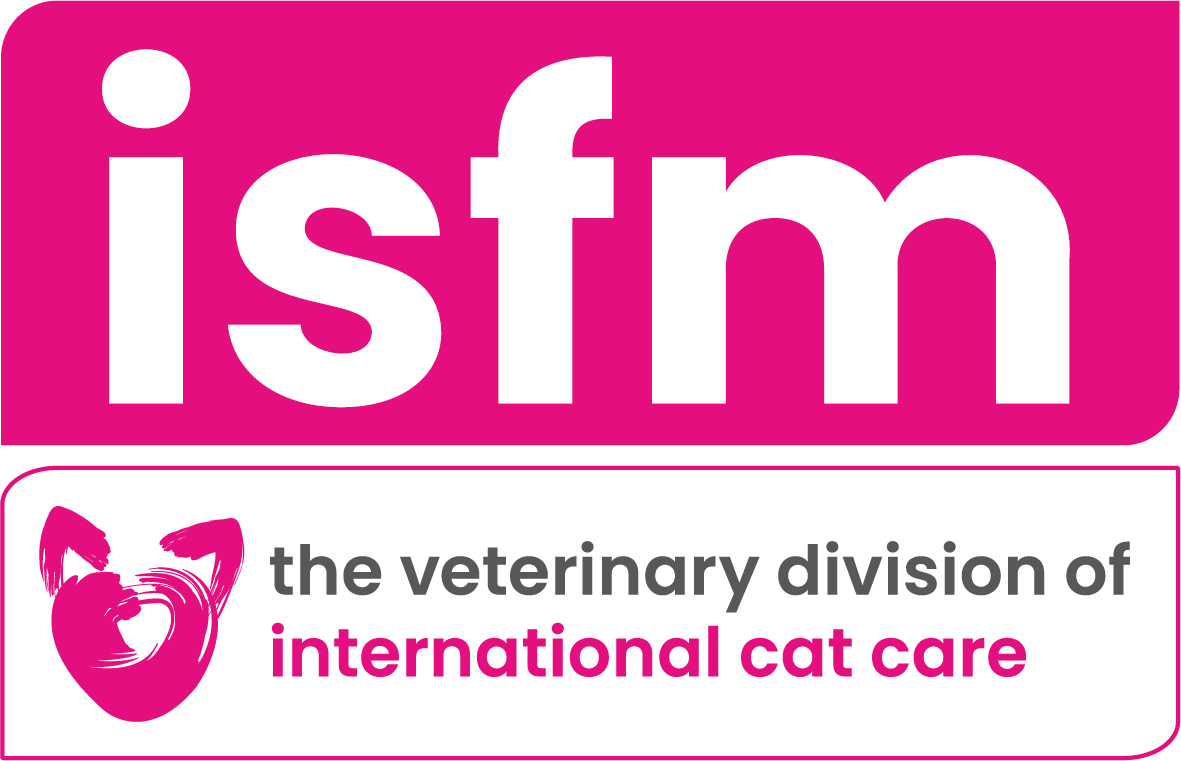
Teach Any Cat AeroKat* - 4: Extending the Duration
This video on teaching your cat to hold their nose in the AeroKat* chamber and Extending the Duration for the full treatment is part of our Teach Any Cat AeroKat* video series.
This training series was created with two leading cat behavior experts from International Cat Care; a Certificated Clinical Animal Behaviorist and trainer; and Head of Cat Advocacy and author of the best-selling book “The Trainable Cat”.
Teach Any Cat AeroKat* Full Series
Developed in partnership with the International Society of Feline Medicine (ISFM), the veterinary division of parent charity International Cat Care.
Teaching Your Cat to Keep Its Nose in the Mask
Teaching your cat to hold its nose in the AeroKat* chamber for the duration of their treatment involves teaching two goals:
- First, to hold this position while breathing in the mask for the length of time it would take to inhale their prescribed medication dose.
- And second, to hold its nose in the AeroKat* chamber with enough pressure (as indicated by the Flow-Vu* Indicator) that the mask snuggly surrounds the muzzle area of the face to maximise inhalation of medication.
These goals are intertwined, as you will see from how they are trained.
Gradually Increasing the Duration of Cat Inhaler Mask Use
To remind your cat of the previous training, offer the mask a few times, each time clicking and feeding for placing its nose into the mask. To increase the duration of time your cat keeps its nose in the mask for, you need to gradually increase the time before you click and feed [which may be a treat]. Such increases should be no greater than a second at each presentation of the mask, and should be interspersed with shorter durations so your cat does not perceive the task getting increasingly more difficult. Your cat will therefore not know when to expect the click, but knows when it does, it can remove its nose from the mask to receive the food.
Delaying the Reward
For example, when the nose is in the mask, pause for half a second before you click, then feed outside the mask. Do the same on the next two repetitions, then finish with a very short nose-in-mask, click and feed. Take a break. On the next round of repetitions, occasionally withhold the click for one second. Once mastered, click and feed for a 1 second hold, then wait for 2 seconds, click and feed, back to 1 second, up to 3 seconds, 5 seconds, 2 seconds, back and forth, to gradually longer times before each click and feed.
By gradually and sensitively introducing longer durations of voluntarily holding the nose in the mask, you will reach the time required for the prescribed number of breaths, often somewhere between 7 and 10 breaths.
Do Not Reward Early Withdrawal
If your cat withdraws from the mask before you were going to click, do not worry. Do not click or reward your cat, but allow them to move away if they chose to. Your cat may not be ready to hold their nose in for so long, or they may be distracted, tired, or uncomfortable, so take a break. For your next training session, simply try again, rewarding a few rounds of less time of nose-in-mask before you increase the criteria to a slightly longer duration. This means you can find a point of success from which to move forward and re-build confidence, always clicking your cat for their nose in the mask and feeding outside the mask.
Under no circumstances should you enforce the mask being on your cat’s face, or insist that they hold it for longer than they can comfortably do during a training session.
Applying Light Pressure to Keep the Mask on the Face
Increasing duration of nose in mask and doing so with enough pressure to create a snug fit are often the most challenging aspects of the training for a cat to grasp. To help, teach your cat that objects causing slight pressure on its body, including close to its face, and for varying lengths of time can be positive. This will help your cat generalise the concepts of duration and pressure to the mask, preventing fleeting actions of nose lightly placed in the mask.
1. Getting your cat used to your touch
Start by placing your hand and/or an innocuous object on a part of your cat’s body where touch is normally accepted → click while your hand rests there → remove your hand → and feed your cat. Repeat, towards and away from the head and face, occasionally pausing for 1-3 seconds before you click and feed. Repeat until you can build up to 3, to 5, or 7 seconds, bouncing back and forth, occasionally just to 1 second or very brief touches, per click and feed. To train for acceptance of increased pressure, use the same technique as for duration, incrementally building the firmness of the touch but interspersed with lighter touches per click and feed.
2. Getting your cat used to the touch of the mask
When your cat has mastered this, proceed to doing the same thing with the mask. Place the mask on the part of your cat’s body it is most comfortable with, click while it is in place, remove it, and feed. Slowly work back and forth towards the head and the easy parts of their body, clicking while the mask is on the body, removing the mask to feed. Do not place the mask over their nose - this exercise is simply to generalise the concepts - they should always approach the mask with their face voluntarily.
Bringing it All Together
Slowly, start to put everything together:
- comfort with resting their nose in the mask for a few seconds at a time
- calmly accepting something on their face with a little pressure for a little time, as they push their nose into the mask. When you notice them pushing their noses into the mask harder, or leaning into it, click and treat - even if it is for less duration initially.
As you build success, you can present the assembled chamber, with the inhaler attached, running through the duration-of-nose-in-mask training steps again, to build relaxed confidence with the assembled AeroKat* Chamber.
Counting Your Cat's Breaths to Confirm Inhalation
your goal now is to count breaths in the mask, rather than seconds, with your cat applying enough pressure to move the Flow-Vu* indicator.
When training for more calm breaths, the same rule applies as building seconds: one breath = click/feed, two breaths = click/feed, back and forth between a few more breaths, and a few less breaths, always rewarding your cat, with a click, whilst they still have their nose in the mask and presenting the food outside the mask. Be sure you are not moving too quickly, or it is difficult for your cat to achieve success. Less is more, and slowly building the steps will achieve faster success!
Before you know it, they will be easily doing their 7 to 10 breaths, as prescribed, in the mask, then receiving their rewards for a wonderful job done! It’s time to move to step 5 – the final video in this training series.


